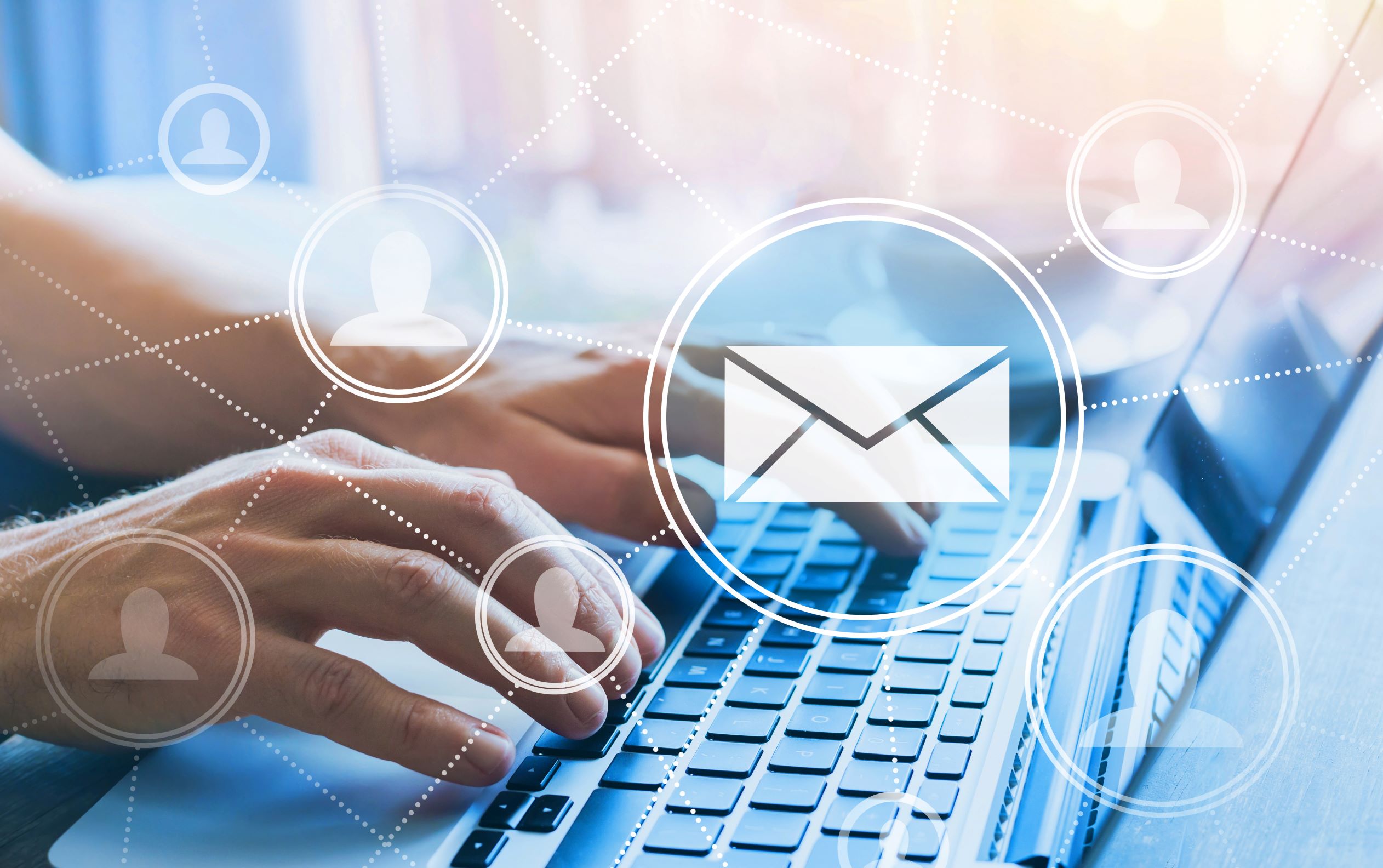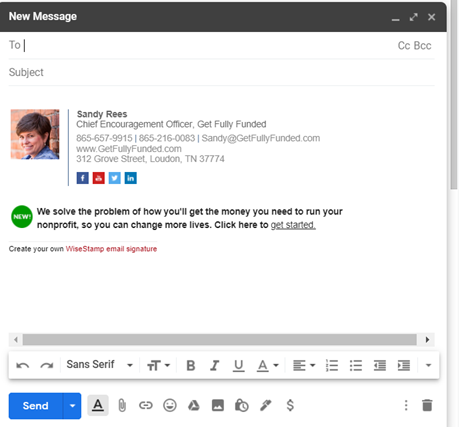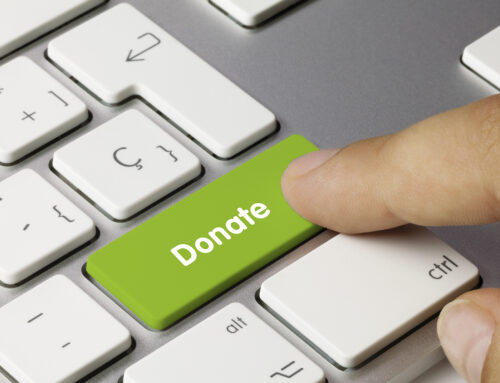 Without an email list, fundraising is tough because it limits your potential to get the revenue you need for your programs.
Without an email list, fundraising is tough because it limits your potential to get the revenue you need for your programs.
On the other hand, the bigger and more responsive your email list is, the more money you can raise.
And the more people (or animals) you can help! This is why your nonprofit exists in the first place, right?
Think about this. The best Ask in the world doesn’t produce much if you only have 10 people on your email list.
Plus, you lose people over time as they move away or grow disinterested in your cause. When you work on constantly building your list, you’ll hardly notice the few that unsubscribe.
But having to grow your email list can be a daunting task.
You might be confused about where to start or what to do.
Well, we’ve got you covered!
How to Grow Your Nonprofit Email List
Your nonprofit does amazing work — making a difference in the world.
So, how do you get more people to sign up to receive emails from you about your amazing work?
After working with hundreds of small nonprofits over the years, below are the tactics we’ve found that work the best to grow a nonprofit’s email list without breaking the bank.
Try 1, 2, or all 10 of these ideas to see what works best for YOUR nonprofit.
1. Add a newsletter opt-in on your website.
Be ready to offer website visitors a way to stay in touch with you. If people are interested enough to visit your site, they’re likely interested enough to opt in for your newsletter.
Just don’t call it a newsletter.
Why? Because NO ONE wants to receive a newsletter.
What they want are updates and inside information.
So, make signing up all about THEM and their interests.
Listen, fundraising is based on relationships, so start your relationships (in this case, with folks who sign up for your email list) focused on THEM and what they want.
That means it cannot be you asking for money right from the start. That’s a no-no.
Of course, you hope that eventually your subscribers will donate, but that’s for later.
First, concentrate on giving people a good reason to opt in, and then build the relationship. Then, the money will follow!
A new subscriber expects to be educated, entertained, inspired, and enlightened.
They already care about your cause, so promise them something MORE, like this:
- “Want to see what it takes to serve homeless families? Come behind the scenes by subscribing to our blog.”
- “Learn more about our work by subscribing to our latest news!”
- “Gain access to exclusive content we only share with our supporters. Subscribe here!”
- “Get all the latest updates about [your mission]. Join our family here!”
Notice none of those mentioned anything about joining a newsletter list – even though that’s what you’re asking them to do?
Before we move on to #2, here’s a tip: be sure to make signup easy.
There are 2 things that’ll keep people from signing up for your email list:
❌ A long sign-up form. There’s no need for you to ask for a lot of information. All you need is their email address and maybe their first name. Keep it simple!
❌ Fear of being spammed. Make sure you promise not to share their email or spam them. And keep that promise!
One last tip: put your opt-in form in the website’s header or footer so it appears on every page.
Arizona Humane has a clever, inviting opt-in right on their home page:

2. Create a blog that people can subscribe to.
If you don’t already blog, you should!
Blogs help you increase your ranking on Google and other search engines and allow you to collect blog subscribers at the same time. A double win for you!
Blogging is a great way to get fresh or exclusive content out to your supporters to keep them engaged and interacting with your nonprofit.
To entice new readers, create content that is ONLY available on your blog and no place else. Then, make sure your social media followers know that they’ll get exclusive information by subscribing to your blog.
Another way to get blog subscribers is to have an invitation at the end of every blog post encouraging people to subscribe – something like, “Did you like this post? Sign up, and we’ll send you an email every time we post something awesome like this!”
Two more tricks is to add a newsletter sign-up option to the comment box on your blog and place links to your newsletter sign up in the blog.
Don’t have a blog for your nonprofit? Start here.
3. Add a newsletter pop-up to your website.
Popups may be annoying to some folks, but they work really well to get eyeballs on a specific call to action AND get results.
Studies show that having a popup on your website before people leave the site actually captures about 1-3% of your website visitors.
This sounds like a small number, but don’t discount it! This can add up to hundreds — or even thousands — of new subscribers in a years’ time.
Typically, nonprofits don’t use popups much on their website, which is a mistake. With a 1-3% conversion rate, you’re missing out on easy growth of your email list by not having a popup.
Your popup can be something simple like, “Get the latest news about our work to fight hunger in our community. Sign up here.”
4. Offer a free resource or tool exclusive to subscribers.
People love valuable, free resources that can help them make a difference. Create something simple and useful for supporters tied to your nonprofit’s work, and offer it as a digital download in exchange for their email.
For example:
- If you’re an environmental organization, create a “10 Easy Ways to Reduce Your Carbon Footprint” guide.
- If you run an animal shelter, share a “Pet Adoption Checklist” to help families prepare for their new furry friends.
- If you help families in need, offer a budgeting template or family meal planner.
Add the offer to your website, promote it on social media, and mention it at your events. Design a clear and compelling sign-up page explaining what they’ll get and how it benefits them.
Not only does this approach grow your email list, but it also engages new supporters by showing them the value of being connected to your cause. Plus, it sets the tone for a meaningful relationship moving forward.
5. Let your current subscribers help you grow your email list.
Ask your current subscribers to share and forward your emails to their friends.
Every one of your newsletters should include buttons to share on social media and a “Forward this email to a friend” message, like this:

If all of your contacts forwarded your email to 10 friends, even if just a small percentage of those friends followed through with a subscription, your reach could expand dramatically.
At the bottom of your emails, include a “Subscribe” option as a simple text-based link so that the people receiving the forwarded emails can easily opt-in, too (see image above).
6. Add a call to action to your email signature.
Your email signature is one of the hottest, yet most overlooked, promotional tools you have.
Be sure to include a simple message and a link so people receiving your emails can join your list.
A message like, “Get the latest news about our work to fight hunger in our community. Sign up here.” at the bottom of your email will get you a few new subscribers.
You can create an automatic email signature yourself in your email software or use a tool like WiseStamp to create a signature that looks really professional.
At Get Fully Funded, we use WiseStamp, and here’s what my automatically-generated email signature looks like every time I start a new email:

7. Add a subscribe link in your Instagram bio.
While you can’t really put live links right into Instagram posts, you can place a link directly into your organization’s bio so it lives there full time.
Then you can say, “Get more info about our nonprofit using the link in our bio.”
8. Use a social media post to invite people to subscribe.
As part of your social media plan, include posts occasionally inviting people to subscribe to get the latest news about your work.
Use a tool like Canva to create an attractive image, and you can use it every time you want to share the call to action.
Here’s an example from our friends at Unity Farm Sanctuary:

Work this message into each of your social media platforms at least once a month so people have a chance to see it.
9. Ask offline donors for their email.
People who mail you a check might be interested in giving you their email address to get news and the inside scoop about your nonprofit.
Be sure to ask for their email address on reply cards in your fundraising appeals, on update postcards, and any other materials you’re mailing.
Set up an easy-to-remember link they can go to, to sign up.
That means you’ll need a page on your website with only your opt-in form and with a link like www.mywebsite.org/signup.
If the link is long or hard to remember, the link becomes a roadblock, and people won’t work to overcome it.
So, keep the link easy.
10. Gather email addresses everywhere you can.
 I’m always stunned at how many obvious places people miss getting email addresses.
I’m always stunned at how many obvious places people miss getting email addresses.
Look around you, and see where people are interacting with your nonprofit – but where you’re not collecting emails.
For example, I was working with a client once, a large animal shelter in Ohio. They had HUNDREDS of people each week expressing interest in available dogs and cats. These were people who believed in their work! But my client wasn’t capturing ANY info!
A simple change in process at the front desk meant the potential for hundreds of new names for their nonprofit email list every month! At NO additional cost!
Another of our animal shelter clients was adopting out dozens of dogs and cats each month and not providing adopters with the chance to receive their newsletter. Another big miss!
Adding a simple checkbox on the adoption application let people give the organization permission to email them. Now, this client is adding new people to their list by the dozens!
If you have a thrift store, are you getting emails from shoppers? Hold a contest or giveaway to get emails.
Doing performances? Give the audience a reason to subscribe.
Online or offline events? Tell participants in addition to the event, they’ll get updates about your nonprofit’s work. Then add their names to your email list.
Look around you, see where you’re missing the boat, and find a way to fix it fast!
Now You’ve Got Them – How Will you Keep Them?
Having to grow your nonprofit email list by getting folks to subscribe to your emails is half the battle.
The second half is KEEPING them.
New subscribers will give you about 3 emails before they decide if they’re going to unsubscribe or not.
That isn’t much time to make a great first impression.
That means every single email communication or blog you write should be interesting, engaging, and informative.
Your subject lines should be interesting, your content should be genuine, and your intentions should be to form a relationship (not just to gain donations).
Think back to any email lists you have unsubscribed from. Why did you unsubscribe?
The most common reason that people unsubscribe from email lists is frequency.
They feel bombarded with email after email, and they don’t want any more.
However, if people like your emails, they don’t mind receiving them frequently.
So focus on the quality of your email message, and make sure what you send is something that people will enjoy receiving and reading.
Email Etiquette
You know by now that your email list is hard-fought, and every subscriber is a precious resource. 
Here are a few final things to keep in mind to help you keep your valuable subscribers.
✅Keep your list clean. Scrub your list twice a year and remove inactive recipients:
- anyone not opening their emails (haven’t opened for 6 or more mailings)
- bounces (undeliverable emails)
- anyone not clicking through on any links
It’s better to have fewer people who are engaged than hundreds of names that never interact with you.
This may help you keep the cost of your email list down, too, since many email programs charge by the number of records you have.
✅Offer and honor “unsubscribe” requests. You should always offer the option to unsubscribe.
Programs like Mailchimp and Constant Contact automatically include an unsubscribe link at the bottom of your email for you.
You can expect to lose about 25% of your list over a year’s time.
It’s common to get a few unsubscribes with every email you send out, so unless you’re getting a LOT of unsubscribes, there’s nothing to worry about.
✅Keep your email frequency manageable. Don’t send multiple emails each week unless you have a REALLY good reason to.
Normally, your recipients should hear from you no more than once a week.
Any more often than that and you run the risk of losing subscribers due to fatigue.
✅Use the 3:1 Ratio. The 3:1 Ratio will serve you well in balancing your communications and preventing donor fatigue.
Basically, you should send at least 3 feel-good communications for every 1 time you ask for money.
Your recipients shouldn’t be getting asked for money more often than once a month.
You can always include a link to donate, but don’t make any official asks for money in your non-Ask emails.
✅Keep your content fresh. If you’ve told people they’ll get exclusive content via email, then deliver on that promise.
It’s okay to share some of the same things in your email that you share on social media, but include some special tidbits in your email to make it special and different.
✅Listen. Always invite your email recipients to share their thoughts or ask questions.
Communication is a two-way street, so ask people to “hit reply and tell us what you think.”
Give your followers a chance to weigh in with an occasional survey to share their opinions.
✅Be personable. Relationships are built between 2 people, not between a person and an organization.
So make sure your emails sound and feel personal… not robotic.
Reply to questions and comments that come in by email or on blog.
Try to reply to all messages within 48 hours, but even if it takes a little longer, reply anyway.
Your prompt, personal response shows your audience that you care about them.
The Bottom Line
A nonprofit’s email list takes a little time and effort to grow, but the result is worth it!
The more people you have on your email list and the more engaged they are, the more likely they are to give to support your nonprofit’s good work in changing lives.
And that’s what we’re here for.



![Build a Nonprofit Website that Works [Steal These Ideas!]](https://getfullyfunded.com/wp-content/uploads/2012/09/AdobeStock_260038257-scaled-500x383.jpeg)



[…] to spread the word about supporting your amazing cause. The fourth and fifth tips in this Get Fully Funded article give details on making it easy for your newsletter subscribers to share with their contacts […]